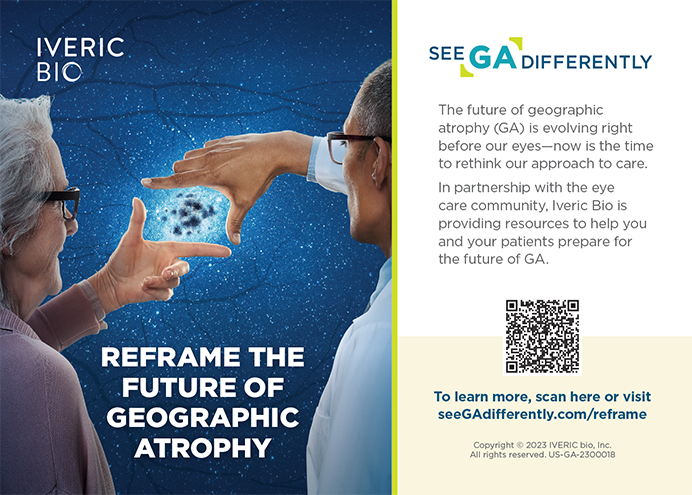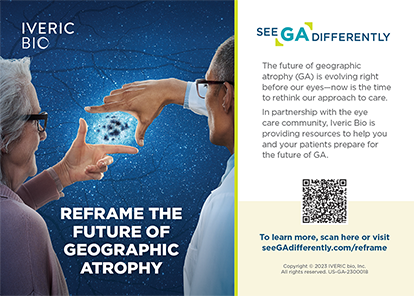Every surgeon faces difficult cases. I have certainly had my fair share of struggles and unfavorable outcomes. When David F. Chang, MD, asked me to share a difficult case from which I learned a significant lesson, my first concern was how to choose just one. I find that complications often occur in cases that I thought were going to be routine, whereas the cases that I dread more often end up uneventful. I would like to share a case that contributed significantly to the development of my white hair, which in turn, has increased my expenditure on products from companies such as Clairol and L'Oréal.
CASE PRESENTATION
A 67-year-old woman was referred to me by an experienced local cataract surgeon. The patient had endstage lung disease due to pulmonary hypertension and a life expectancy of less than 3 months. Her name had been removed from the lung transplant list because she also had significant heart disease, which would result in a poor success rate. She was on 6 L of oxygen at rest, and she was unable to recline due to shortness of breath. At best, the patient could lie back to a 45º angle for approximately 5 minutes, after which she would have to sit upright to catch her breath.
Her preoperative BCVA was count fingers at 2 feet in her right eye and 20/400 in her left eye. Her cataracts were unusually brunescent for her age, due in part to many years of methylprednisone use. Fortunately, the remainder of her examination was unremarkable with good pupillary dilation and no other ophthalmic abnormalities.
WORTH THE RISK
One might ask why any surgeon in her right mind would possibly attempt elective eye surgery on a person with mature, hard cataracts, fewer than 3 months to live, serious comorbid diseases, and an inability to lie flat. In fact, when her pulmonologist heard that she was contemplating cataract surgery, he immediately called me to stress that she could not undergo any type of sedation that might result in respiratory suppression. He also reminded me of her short life expectancy.
Anyone who met this patient, however, would understand why I would undertake the risk. She was remarkably ebullient. Her optimism was so irrepressible that she even made Pollyanna seem lugubrious. Fully aware of her imminent mortality and her unusual situation, the patient adamantly requested cataract surgery. She wanted to see her family clearly one last time.
SURGICAL PLANNING
Armed with the knowledge that, even with a completely disastrous outcome, the patient would be satisfied with the attempt, I forged ahead and planned for surgery in her worse-seeing eye. Because she could not tolerate sedation, I would use topical/intracameral anesthesia. I knew that the patient would have to remain upright until the last possible moment to minimize the total amount of time that she was recumbent. Once she was reclined, the clock would start ticking, with fewer than 5 minutes to complete the case.
The dense, hard cataract raised the specter of a capsular tear in my mind. A complication would grossly increase the total amount of operative time, which the patient could not tolerate in a supine position. I had some experience operating on semi-upright patients, but I never had to manage a complication when a patient was in this position. I was not sure if attempting an anterior vitrectomy with her in an upright position would be possible and what other obstacles would present in such a situation. Needless to say, the night before the surgery, my toss-and-turn rate rivaled that of the princess and the pea in the famous children's story by Hans Christian Anderson.
SEMI-UPRIGHT POSITION
The morning of the surgery finally arrived. With great trepidation, I brought the patient to the OR. While upright, her eye was prepped and draped for surgery. The microscope, foot pedals, phaco machine, and instrument table were prepared, and then the patient was reclined to a 45º angle. The anesthesiologist carefully watched the pulse oximeter for any signs of oxygen desaturation. We were off to the races.
I do not recommend operating on a semi-upright patient. Ophthalmologists are known to develop arthritis in the cervical spine from chronically contorting their head and neck to use slit lamps and operating microscopes. This case did no favors for my advancing arthritis, although it did remind me to check on my disability coverage.
OUTCOME
I was lucky that day. The case went smoothly and quickly. I did not have to utter those dreaded words, “Please open the vitrectomy pack.” I was relieved when the case was over. When the patient returned for her 1-day postoperative examination, her UCVA was 20/20. As she was wheeled into my examination room by a family member, the patient shed tears of joy. She grabbed me by the hand and told me that I had given her the greatest gift she had ever received and that I would never know what an impact this surgery would have on the rest of her life. What the patient did not realize was that her words were one of the greatest gifts that I had ever received. She passed away 1 month later.
LESSONS LEARNED
Preparation is important. Careful planning of all the different aspects of surgery is crucial to a successful outcome. Surgeons often prepare well for potential intraoperative complications with a vitrector and sulcus or anterior chamber IOLs on standby. However, proper preparation also includes sufficient preoperative counseling to ensure that the patient and family are fully aware of the risks. Understanding the specific difficulties presented by each case, such as the amount of time this patient could remain in a reclined position, and making alterations to minimize those limitations can lead to a successful outcome.
Surgeons must treat each case individually. Although many doctors would have decided that the risks outweighed the benefits in this case, it was important to consider the impact of a positive outcome on the patient's life. Equally important, however, is to understand the impact of a negative outcome before deciding to proceed.
Finally, a good massage after surgery is worth every penny.
Section Editor David F. Chang, MD, is a clinical professor at the University of California, San Francisco, and is in private practice in Los Altos, California. Dr. Chang may be reached at (650) 948-9123; dceye@earthlink.net.
Bonnie An Henderson, MD, is a partner in Ophthalmic Consultants of Boston and an assistant clinical professor at Harvard Medical School in Boston. Dr. Henderson may be reached at (781) 487-2200, ext. 3321; bahenderson@eyeboston.com.


